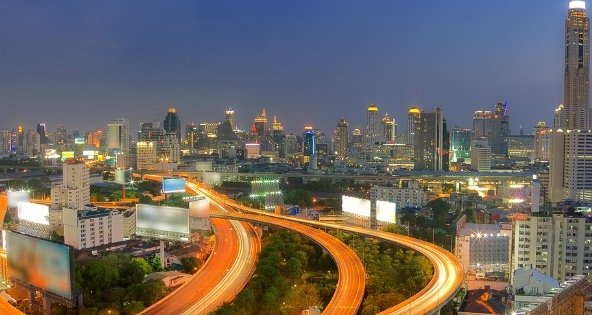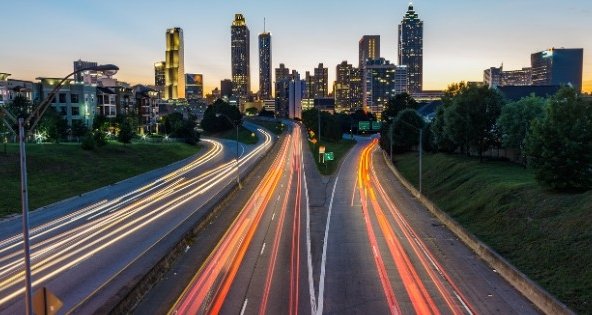Introduction
Dwarka Expressway, officially known as the Northern Peripheral Road (NPR), is a significant infrastructure initiative designed to transform the connectivity and urban landscape of the National Capital Region (NCR). Stretching approximately 29 kilometers, this eight-lane expressway serves as a critical link between Delhi and Gurugram, aimed at easing congestion on the frequently overburdened NH-8 (Delhi-Gurugram Expressway). This ambitious project is not only expected to streamline traffic but also catalyze economic and real estate growth in the surrounding areas.
The development of Dwarka Expressway represents a monumental effort in urban planning and infrastructure development, reflecting the growing needs of a rapidly urbanizing region. This expressway has garnered significant attention from policymakers, real estate developers, and investors alike, all of whom recognize its potential to drastically alter the region’s dynamics. As it nears completion, the expressway promises to offer substantial benefits in terms of reduced travel times, enhanced connectivity, and a surge in real estate activities.
Historical Background
The vision for Dwarka Expressway emerged in the early 2000s, as planners sought solutions to the escalating traffic congestion on NH-8. This stretch of road, pivotal for commuters traveling between Delhi and Gurugram, frequently experienced bottlenecks, particularly during peak hours. The idea was to create an alternative route that would not only alleviate traffic on NH-8 but also foster development in the relatively underutilized areas between the two cities.
However, the project faced numerous obstacles from its inception. Land acquisition, always a contentious issue in India, proved to be a significant hurdle. The process was marred by delays and legal battles, as landowners and developers navigated the complexities of compensation and relocation. These challenges were further compounded by regulatory approvals and environmental clearances, which added layers of bureaucracy to the project’s timeline.
Despite these challenges, persistent efforts from both the Haryana and Delhi governments, alongside the National Highways Authority of India (NHAI), gradually propelled the project forward. The collaborative efforts aimed at addressing land acquisition issues, compensating displaced families, and securing the necessary clearances eventually began to bear fruit. As of now, the expressway is on the cusp of completion, marking a significant milestone in the region’s infrastructural journey.
Route and Construction Details
The Dwarka Expressway begins at Shiv Murti in Mahipalpur, Delhi, and terminates at the Kherki Daula Toll Plaza in Gurugram. The expressway’s design incorporates state-of-the-art engineering and urban planning principles to ensure a smooth and efficient traffic flow. It is divided into five main construction packages, each with specific features and components aimed at optimizing connectivity and accessibility:
- Package 1: This segment spans from the IGI Airport and Shiv Murti at Mahipalpur to the Bijwasan Road Underbridge (RUB), covering 5.9 kilometers. This section includes crucial interchanges and flyovers to facilitate traffic movement from the airport to the expressway.
- Package 2: Extending from Bijwasan RUB to the Delhi/Haryana Border, this 4.2-kilometer stretch is vital for seamless inter-state connectivity.
- Package 3: Covering 10.2 kilometers from the Delhi/Haryana Border to the Basai Rail Overbridge (ROB), this segment includes several underpasses and overpasses to ensure uninterrupted traffic flow.
- Package 4: This 8.8-kilometer stretch from Basai ROB to Kherki Dhaula includes sophisticated traffic management systems and infrastructure enhancements to handle high traffic volumes.
- Package 5: A special 5-kilometer stretch dedicated to airport connectivity, this segment includes a tunnel leading directly to Terminal 3 of the IGI Airport, providing an expedited route for travelers.
The construction of these packages involved cutting-edge technology and meticulous planning to ensure the expressway meets international standards. The inclusion of multiple underpasses, flyovers, and cloverleaf intersections is designed to minimize congestion and enhance safety. Additionally, advanced traffic management systems and surveillance mechanisms are being integrated to monitor and manage traffic in real time.
Economic and Real Estate Impact
The imminent completion of Dwarka Expressway is expected to have a profound impact on the economic and real estate landscape of the NCR. The region has already witnessed a substantial rise in property prices, driven by the anticipation of enhanced connectivity and infrastructural improvements. Data from Anarock, a leading real estate consultancy, reveals that the average property price along the Dwarka Expressway corridor increased by an impressive 41% between 2020 and 2023, rising from Rs 5,890 per square foot to nearly Rs 8,300 per square foot.
This surge in property prices is indicative of the high demand for real estate in the region, fueled by both residential and commercial interests. Several prominent developers have launched high-end projects along the expressway, including luxury apartments, commercial spaces, and mixed-use developments. Signature Global, for instance, has introduced a premium project named “DE LUXE-DXP,” which has already seen robust sales and significant investment commitments.
The expressway’s completion is expected to unlock vast swathes of land for development, further intensifying real estate activities. According to industry estimates, the region will see more than 10,515 housing units ready for possession within the next two years, catering to the growing demand for residential properties. Additionally, the expressway is poised to attract commercial investments, with several developers acquiring land and planning large-scale commercial projects to capitalize on the enhanced connectivity.
Connectivity and Infrastructure Development
A primary advantage of the Dwarka Expressway is its potential to drastically reduce travel times between Delhi and Gurugram. The expressway will provide a direct and uninterrupted route, bypassing the frequently congested NH-8 and offering a more efficient commuting experience. One of the most significant benefits will be the reduced travel time from Manesar to the Indira Gandhi International Airport, which is expected to drop to just 20 minutes, a considerable improvement for commuters and travelers.
The expressway also features several infrastructural enhancements designed to improve overall connectivity. These include multiple underpasses, overpasses, and flyovers to ensure smooth traffic flow, as well as service roads and dedicated pedestrian pathways to enhance safety and accessibility. The integration of intelligent traffic management systems and surveillance technologies will further optimize traffic flow and reduce congestion.
Moreover, the Haryana government is developing the Global City project along the expressway, envisioned as a massive business district with state-of-the-art infrastructure. This project aims to create a vibrant urban hub with residential towers, office spaces, retail areas, hospitals, schools, and cultural zones. The development will feature a 6-kilometer green corridor and a large water body for water conservation, reflecting the principles of sustainable urban development.
Challenges and Future Prospects
Despite the numerous advantages of Dwarka Expressway, the project faces several challenges, particularly in the realm of public transportation. Currently, there is a noticeable lack of adequate public transit options along the expressway, which could lead to increased traffic congestion as more people move to the area. Addressing this issue, authorities are planning to deploy 100 electric buses along the route and develop a new interstate bus station near the expressway to enhance public transportation options (Hindustan Times).
Additionally, the successful completion and operational efficiency of the expressway will depend on the timely execution of associated infrastructure projects. These include the construction of service roads, cloverleaf intersections, and utility ducts, which are essential for ensuring smooth traffic flow and providing residents with essential services. Delays or shortcomings in these areas could undermine the expressway’s potential benefits.
Furthermore, maintaining the balance between rapid urbanization and environmental sustainability is crucial. The expressway’s development must adhere to stringent environmental norms to mitigate the impact on local ecosystems. Sustainable practices such as rainwater harvesting, waste management, and green building certifications will be vital in ensuring that the region’s development is both environmentally and economically sustainable.
Conclusion
The rise of Dwarka Expressway marks a transformative phase in the urban development of the NCR. By significantly enhancing connectivity, promoting real estate growth, and alleviating traffic congestion, the expressway stands as a testament to India’s commitment to modernizing its infrastructure. The collaborative efforts of government agencies, developers, and planners have been instrumental in bringing this ambitious project to fruition.
As the expressway nears completion, it is set to become a pivotal artery in the region’s transportation network, fostering economic growth and improving the quality of life for residents. The integration of advanced infrastructure, sustainable practices, and robust public transportation systems will be key to unlocking the full potential of this transformative corridor. The Dwarka Expressway is not just a road; it is a symbol of progress, resilience, and the relentless pursuit of urban excellence in India’s National Capital Region.





